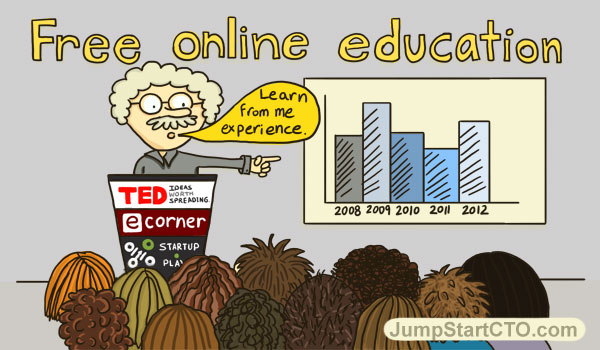This article discusses the importance of defining your html"}]' tabindex='0' role='link'>target audience or html"}]' tabindex='0' role='link'>Personas as they might be referred to by UEX and Product managers.
 html"}]' tabindex='0' role='link'>personas to help define your html"}]' tabindex='0' role='link'>target audience and better anticipate the user requirements that will need to be developed into your html"}]' tabindex='0' role='link'>Minimum Viable Product." width="600" height="350" srcset="" data-srcset="https://d2haskyseezqzi.cloudfront.net/wp-content/uploads/2013/06/target_audience01.jpg 600w, https://d2haskyseezqzi.cloudfront.net/wp-content/uploads/2013/06/target_audience01-300x175.jpg 300w" sizes="(max-width: 600px) 100vw, 600px"/>
html"}]' tabindex='0' role='link'>personas to help define your html"}]' tabindex='0' role='link'>target audience and better anticipate the user requirements that will need to be developed into your html"}]' tabindex='0' role='link'>Minimum Viable Product." width="600" height="350" srcset="" data-srcset="https://d2haskyseezqzi.cloudfront.net/wp-content/uploads/2013/06/target_audience01.jpg 600w, https://d2haskyseezqzi.cloudfront.net/wp-content/uploads/2013/06/target_audience01-300x175.jpg 300w" sizes="(max-width: 600px) 100vw, 600px"/>
Read More …
Category Archives: Methodologies
Why defining your target audience is important
Approaches to MVP Testers – the Web App Case
Providing support for your html"}]' tabindex='0' role='link'>Minimum Viable Product testers (sometimes known as Alpha version users) is an ongoing process that requires preparation and considerable time and effort in order to receive the kinds of feedback that you are after.
This is the second article which describes another type of venture, one where the product release was done to an ever-growing audience of testers which were not controlled. Because of these complexities, dealing with and offering support to our initial users required a different approach.

Read More …
Approaches to finding testers for your MVP, The iPhone App
Providing support for your html"}]' tabindex='0' role='link'>Minimum Viable Product testers (sometimes known as Alpha version users) is an ongoing process that requires preparation and considerable time and effort in order to receive the kinds of feedback that you are after.
Recently I have come across several complexities when working with html"}]' tabindex='0' role='link'>Minimum Viable Product testers. Here I describe two ventures; each with a different model for using html"}]' tabindex='0' role='link'>Minimum Viable Product testers, and consequently chosen because of different users’ needs and approach for each. Here I share my experiences and lessons learned from dealing with both types in this two-part article

Read More …
Online Education Resources for Startups
In this article, I would like to share some online education resources that you can use to help you in the early stages of developing your invention or idea as an entrepreneur.
These online educational resources includes videos, podcasts, recorded interviews and articles that often times are mostly free allowing you to easily prepare for yourself a self training plan on almost any subject, giving you the opportunity to listen to some of the most experienced entrepreneurs or lecturers explaining their views and experiences as well as giving their sales pitch.

Read More …
Cross Platform Applications and Responsive Design
This article discusses one of the more important trends in current application design and development, html"}]' tabindex='0' role='link'>cross platform application, which impacts your product’s ability to reach different types of audiences that use various devices. When developing your html"}]' tabindex='0' role='link'>Minimal Viable Product (html"}]' tabindex='0' role='link'>Minimum Viable Product)?" href="http://jumpstartcto.com/what-is-a-minimal-viable-product-Minimum Viable Product/">html"}]' tabindex='0' role='link'>Minimal Viable Product (html"}]' tabindex='0' role='link'>Minimum Viable Product), html"}]' tabindex='0' role='link'>cross platform application support immediately becomes a big challenge to the problem of reaching your html"}]' tabindex='0' role='link'>target audience.
 html"}]' tabindex='0' role='link'>cross platform application in products with built-in html"}]' tabindex='0' role='link'>responsive design features." width="600" height="350" srcset="" data-srcset="https://d2haskyseezqzi.cloudfront.net/wp-content/uploads/2013/03/responsive-design2.jpg 600w, https://d2haskyseezqzi.cloudfront.net/wp-content/uploads/2013/03/responsive-design2-300x175.jpg 300w" sizes="(max-width: 600px) 100vw, 600px"/>
html"}]' tabindex='0' role='link'>cross platform application in products with built-in html"}]' tabindex='0' role='link'>responsive design features." width="600" height="350" srcset="" data-srcset="https://d2haskyseezqzi.cloudfront.net/wp-content/uploads/2013/03/responsive-design2.jpg 600w, https://d2haskyseezqzi.cloudfront.net/wp-content/uploads/2013/03/responsive-design2-300x175.jpg 300w" sizes="(max-width: 600px) 100vw, 600px"/>
Defining your Startup Key Performance Indicator (KPI)
KPI’s and the Human Body
It is easy to understand what a Key Performance Indicator is by way of metaphor, because what the term KPI stands for, comes from our interactions with the human body. The most common KPI that is monitored in Western society is found by studying a person’s health condition, specifically by taking the body’s internal temperature. This is one of the most important indicators that can instantly tell us if someone may be sick or not. A gradual change in temperature or a quick fluctuation can indicate that the human body is recovering or fighting infection. There are several other indicators but only few of them are as important as the body temperature. Body temperature therefore defines by metaphor what is known as the Key Performance Indicator. In the study of Chinese medicine, there are other important KPIs which are measured to determine the human body’s condition. Demographically, the KPI is determined by a wide range of considerations, from the standards of measurement for the conditions of the prospective study, and from the background of the subject to the setting of the testing environment. These are all factors that contribute to determining the meaning of the KPIs we observe.
Read More …
How to Gather and Prioritize User Requirements and Functionality for a Minimal Viable Product?
In ahtml"}]' tabindex='0' role='link'>Minimal Viable Product (html"}]' tabindex='0' role='link'>Minimum Viable Product)?" href="http://jumpstartcto.com/what-is-a-minimal-viable-product-Minimum Viable Product/"> previous post we established a working definition of the html"}]' tabindex='0' role='link'>Minimal Viable Product (html"}]' tabindex='0' role='link'>Minimum Viable Product) and argued that it is more a process within one’s product development strategy that is supported in different scenarios, than it is a definition of a goal in itself.
In this post is meant to extend the discussion of development processes that determine the html"}]' tabindex='0' role='link'>Minimum Viable Product into areas of what functionality to include, as well as what to exclude, when designing your product’s offering.
What is a Minimal Viable Product (MVP)?
The term ‘html"}]' tabindex='0' role='link'>minimal viable product’ is a common buzzword these days in the realm of business start-ups and early stage ventures by product managers and developers who are trying to perfect their product offering. The html"}]' tabindex='0' role='link'>Minimal Viable Product (html"}]' tabindex='0' role='link'>Minimum Viable Product) is actually better defined as a process and not necessarily as a product goal in itself.
A Definition of the html"}]' tabindex='0' role='link'>Minimal Viable Product (html"}]' tabindex='0' role='link'>Minimum Viable Product)
The basic definition for the html"}]' tabindex='0' role='link'>Minimum Viable Product includes those features that allow the product to be deployed within the defined html"}]' tabindex='0' role='link'>target audience.
How can a CTO help me test my product?
Do you know where to begin testing your product?
html"}]' tabindex='0' role='link'>Usability evaluation of software products and web applications is a growing trend in venture and is proving to be an important need when one is concerned with saving money. It ensures that the product is easy to use and that users have a positive experience. When one is steering a html"}]' tabindex='0' role='link'>Lean Startup" href="http://jumpstartcto.com/the-lean-start-up/" target="_blank">lean start-up through new waters, a html"}]' tabindex='0' role='link'>usability evaluation can often be an invaluable tool that will saves both time and money.
The Mistakes We Make: Starting Up A Venture or Business, Part 2
We’re talking about common mistakes that people make in the early days of a start-up. Here’s the rest of the list, continued from Part 1.
Not Taking the html"}]' tabindex='0' role='link'>Lean Startup Approach
It is very tempting to build the best and most feature rich product, but does this serve your goals or your html"}]' tabindex='0' role='link'>target audience? No, it does not. You must identify the html"}]' tabindex='0' role='link'>minimal viable product which will meet the needs of your html"}]' tabindex='0' role='link'>target audience and remove all unneeded features and functionality of the initial version. Once your launch your product, you will discover the real needs and features needed – some will be as you might have expected but many will be new and come from your html"}]' tabindex='0' role='link'>target audience needs and reactions. [see also html"}]' tabindex='0' role='link'>Lean Startup" href="http://jumpstartcto.com/the-lean-start-up/" target="_blank">The html"}]' tabindex='0' role='link'>Lean Startup]
The Mistakes We Make: Starting Up A Venture or Business, Part 1
When starting up a new venture one has to be careful. Since each new venture has its own unique challenges, there are several common mistakes often repeated in the early stages of businesses that you need to watch out for; all of which could negatively affect your business further down the road.
These are some of the more common mistakes that I found commonplace in my experiences of working with startups.
How to Develop Your Idea into a Product
The html"}]' tabindex='0' role='link'>Minimal Viable Product
Building your idea into a product requires a process that involves several different modes of expertise and knowledge. Above all, one must have a plan or methodology to follow so that the outcome will meet one’s expectations and more importantly your plan will address what your proposed html"}]' tabindex='0' role='link'>target audience needs.
First and foremost to your plan is the need to focus your idea. This is done by doing comprehensive research and identifying potential competitors, in order to understand what the proposed value of your offering is in comparison to other players within your niche market. Often it may be more difficult to be first player in your market than being in a position among several other players. Despite the fact that being first gives you the advantage, it also means your market is not yet defined and you need to educate your customers in advance on how to use your product.
The Lean Startup
The Lean Start-up is an interesting concept from the brain of html"}]' tabindex='0' role='link'>Eric Ries, a Silicon Valley entrepreneur and author; he authors a blog and has written a very popular book by the same name. He espouses the idea of streamlining your start-up’s focus to deliver the desired product to the right audience. And then to use that audience to perfect your offering.
Lean is not about money necessarily – though the aim is to do without large amounts of seed money – but about the best use of resources to accomplish your company’s goals.


